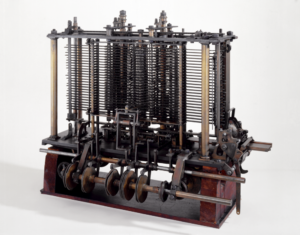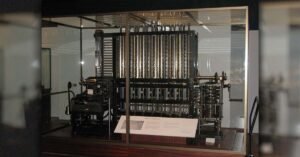EARLY COMPUTING DEVICES III
In the previous post, we saw few advanced early computing devices. In this post, you’ll see more advanced early computing devices iii before the 19th century.
Charles Babbage’s Difference Engine:

In 1822, Charles Babbage an English Mathematician started a design on the difference engine. It was intended to be steam powered, fully automatic, even to the printing of the resulting table, and commanded by a fixed program. The device was never completed.
Uses of Charles Babbage’s Difference Engine:
The difference engine could solve polynomial equation using a numerical method called the method of differences.
Components of Charles Babbage’s Difference Engine:
Numbers were represented by the positions of metal wheels with 10 teeth.
The engine had storage to hold data temporarily for later processing.
The Difference Engine used the method of finite differences, which involved addition and subtraction.
The engine was designed to stamp its output onto soft metal, which could then be used to make a printing plate.
Charles Babbage’s Analytical Engine:

Charles Babbage in 1830’s, invented a machine that could perform difficult calculations accurately and faster and called it “Analytical Engine”.
This programmable machine, due to punched card technology was very big, powered by 6 steam engines.
Because of the connection with Jacquard’s loom, Babbage called the two parts of his analytical engine the “store” and the “mill” as both terms are used in Jacquard’s loom weaving industry. The Store was where numbers were held and the mill was where they were “woven” into new result.
In modern computer, these same parts are called the memory unit and the central
processing unit (CPU).
Components of Charles Babbage Analytical Engine:
The analytical engine worked by a series of gears and levers. It had a reader and a printer.
Analytical Engine was programmed using punched cards.
Uses of Charles Babbage Analytical Engine:
The analytical engine was the first general computational device, with the ability to solve different types of equations. It introduced General-purpose computer.






